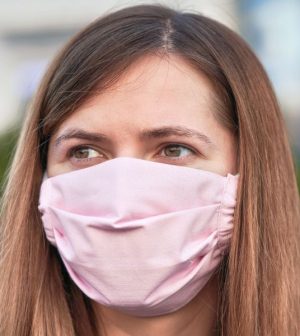- Navigating Your Midlife Crisis: Embracing New Possibilities
- City Raccoons Showing Signs of Domestication
- Mapping the Exposome: Science Broadens Focus to Environmental Disease Triggers
- One Week Less on Social Media Linked to Better Mental Health
- Your Brain Changes in Stages as You Age, Study Finds
- Some Suicide Victims Show No Typical Warning Signs, Study Finds
- ByHeart Formula Faces Lawsuits After Babies Sickened With Botulism
- Switch to Vegan Diet Could Cut Your Greenhouse Gas Emissions in Half
- Regular Bedtime Does Wonders for Blood Pressure
- Dining Alone Could Mean Worse Nutrition for Seniors
Lower Rates of COVID in States That Mandated Masks: Study

States that required people to mask up last year had lower rates of COVID-19 than those with no mask requirements, a new study finds.
Researchers examined data from all 50 states and Washington, D.C., to assess mask policies, people’s self-reported use of masks in public, and COVID rates from May through October 2020.
They factored in a one-month delay between mask wearing and its subsequent potential effect on COVID infection rates.
“States with the lowest levels of mask adherence were most likely to have high COVID-19 rates in the subsequent month, independent of mask policy or demographic factors,” the Boston University team recently wrote on the preprint server medRxiv, before their findings had been peer-reviewed.
Charlie Fischer of Boston University’s School of Public Health led the study. The final reviewed findings were published April 14 in the journal PLOS ONE.
The study classified COVID rates topping 200 cases per 100,000 residents as high — and the researchers reported that 14 of 15 states that didn’t require people to wear masks in public were in that category.
They found that none of the eight states with 75% or higher self-reported public mask use had a high COVID rate.
Those eight states had an average infection rate of 109.26 per 100,000 residents in the following month, compared with 249.99 per 100,000 in states with less than 75% public mask use.
“This protective effect of mask wearing was evident across four months of the pandemic, even after adjusting the associations for mask policy, distance policy and demographic factors,” Fischer and her colleagues said in a journal news release.
States have had differing policies on mask use, and the authors said understanding the link between mask use and COVID rates could help guide policies to reduce pandemic-related pressure on health care systems, economic instability and death.
They suggested that policies and public health efforts to reduce the spread of COVID should include a focus on increasing mask use nationwide.
More information
The U.S. Centers for Disease Control and Prevention has more on COVID-19 and masks.
SOURCE: PLOS ONE, news release, April 14, 2021
Source: HealthDay
Copyright © 2025 HealthDay. All rights reserved.










